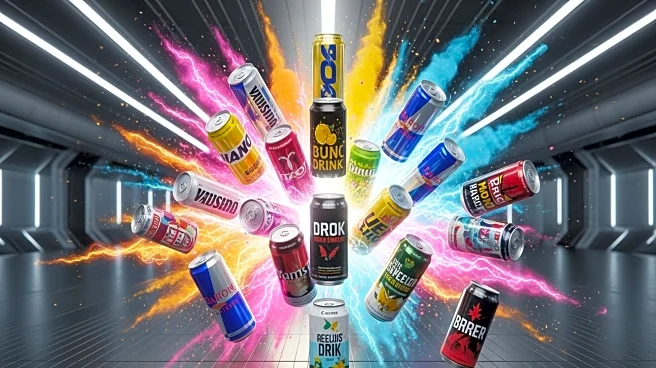What's Happening?
Energy drinks, which are beverages containing caffeine, sugar, taurine, and other ingredients, are popular among American teens and young adults, particularly men aged 18 to 34. These drinks claim to improve physical endurance and mental alertness but can also lead to reduced steadiness of the hands. Health experts recommend that children and teens avoid energy drinks due to their high caffeine and sugar content, which can cause higher blood pressure and sleep problems. Mixing energy drinks with alcohol is particularly risky, as it can mask the effects of intoxication, leading to increased alcohol consumption and risky behaviors.
Why It's Important?
The consumption of energy drinks among teens poses significant health risks, including potential cardiovascular issues and sleep disturbances. The high caffeine content can exacerbate existing health problems, such as high blood pressure and abnormal heart rhythms. Additionally, the combination of energy drinks and alcohol can lead to dangerous behaviors and increased alcohol intake. Parents and caregivers are encouraged to educate their children about the risks associated with energy drinks and promote healthier alternatives like water and balanced diets.
What's Next?
Health experts continue to advise against the consumption of energy drinks by children and teens. Parents are urged to discuss the potential dangers with their children and encourage healthier hydration options. The focus remains on promoting awareness about the risks of energy drinks, particularly when mixed with alcohol, and advocating for better dietary choices among young people.
Beyond the Headlines
The long-term effects of energy drink consumption are still being studied, but concerns remain about their impact on adolescent health. The marketing of these drinks often targets young consumers, emphasizing the need for regulatory measures to limit their accessibility and advertising. The cultural acceptance of energy drinks as a quick energy boost may overshadow the potential health risks, necessitating ongoing public health campaigns.










